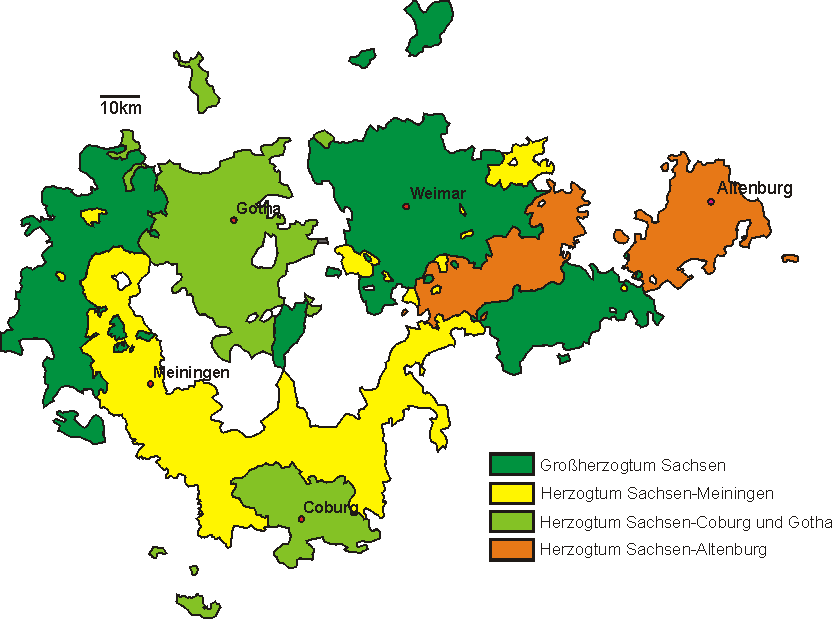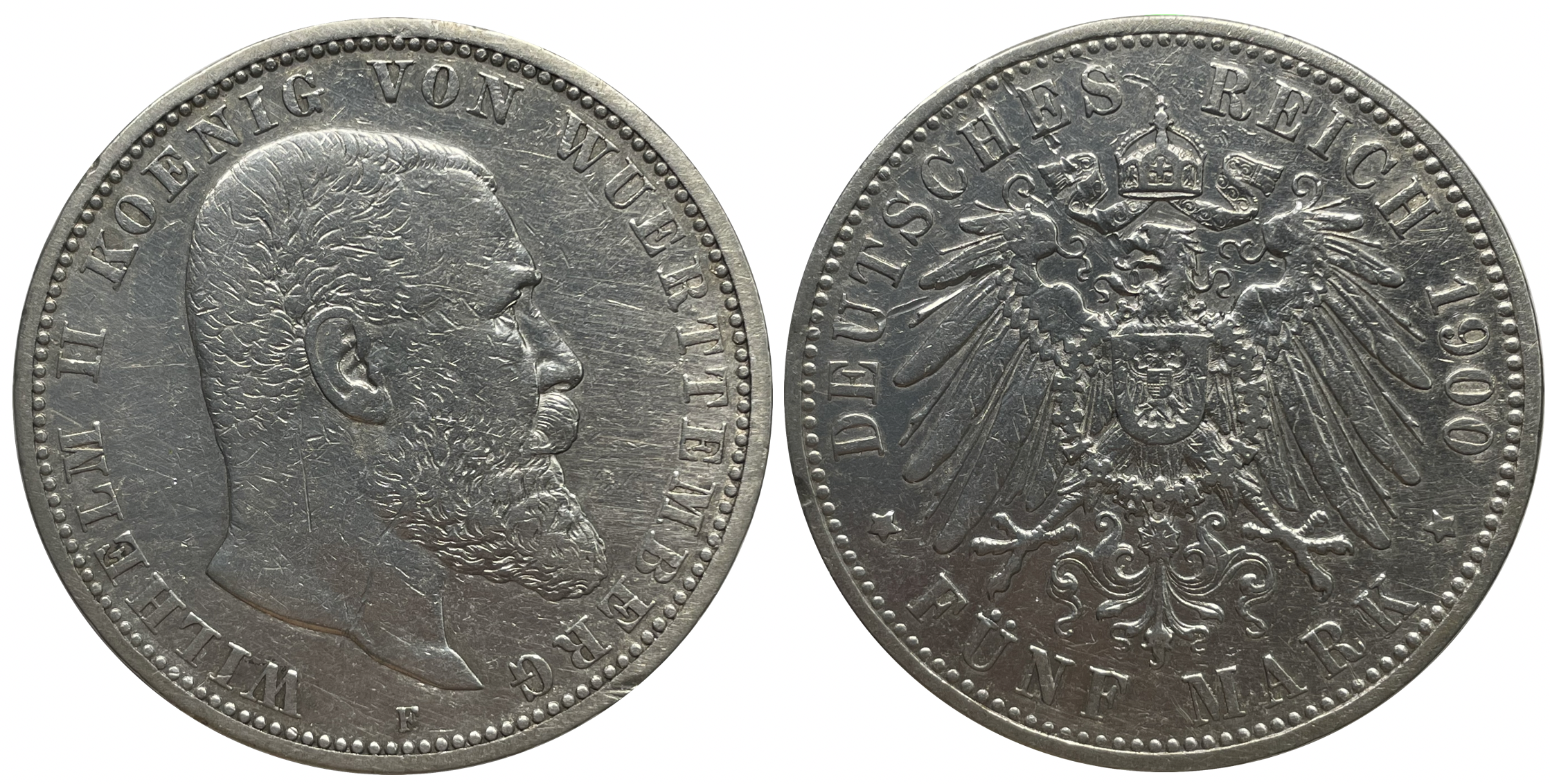|
Frederick Augustus Of Anhalt-Dessau
Frederick Augustus of Anhalt-Dessau (german: Friedrich August von Anhalt-Dessau) (23 September 1799 – 4 December 1864), was a German prince of the House of Ascania from the Anhalt-Dessau branch. Birth and family Frederick was born in Dessau on 23 September 1799 as the fourth (but third surviving son) of Frederick, Hereditary Prince of Anhalt-Dessau, by his wife Landgravine Amalie of Hesse-Homburg, daughter of Frederick V, Landgrave of Hesse-Homburg. Marriage and issue In Rumpenheim Castle in Offenbach am Main on 11 September 1832, Frederick Augustus married Princess Marie Luise Charlotte of Hesse-Kassel (b. Copenhagen, 9 May 1814 - d. Schloss Hohenburg, 28 July 1895). She was a daughter of Prince William of Hesse-Kassel by his wife Princess Louise Charlotte of Denmark, a sister of King Christian VIII of Denmark. Marie was an older sister of the later Queen Louise, wife of King Christian IX of Denmark. Frederick and Marie had three daughters: # Adelaide Marie (b. Dessau, 25 ... [...More Info...] [...Related Items...] OR: [Wikipedia] [Google] [Baidu] |
Princess Marie Luise Charlotte Of Hesse-Kassel
Princess Marie Luise Charlotte of Hesse-Kassel (9 May 1814 – 28 July 1895) was a member of the House of Hesse-Kassel by birth. Through her marriage to Prince Frederick Augustus of Anhalt-Dessau, she became a princess of Anhalt-Dessau. Family Marie Luise Charlotte was the second child and daughter of Prince William of Hesse-Kassel and his wife Princess Louise Charlotte of Denmark. She was an elder sister of Louise of Hesse-Kassel, consort of Christian IX of Denmark: Her other siblings included Prince Frederick William of Hesse-Kassel and Princess Auguste Sophie Friederike of Hesse-Kassel. Marriage and issue Marie Luise Charlotte married Prince Frederick Augustus of Anhalt-Dessau, fourth but third surviving son of Frederick, Hereditary Prince of Anhalt-Dessau and his wife, Landgravine Amalie of Hesse-Homburg, on 11 September 1832 at Rumpenheimer Schloss in Offenbach am Main. The couple had three children: * ''Adelaide Marie'' (Dessau, 25 December 1833 – Schloss Königstein, ... [...More Info...] [...Related Items...] OR: [Wikipedia] [Google] [Baidu] |
Christian VIII Of Denmark
Christian VIII (18 September 1786 – 20 January 1848) was King of Denmark from 1839 to 1848 and, as Christian Frederick, King of Norway in 1814. Christian Frederick was the eldest son of Hereditary Prince Frederick, a younger son of King Frederick V of Denmark and Norway. As his cousin, King Frederick VI had no sons, Christian Frederick was heir presumptive to the throne from 1808. Early years Birth and family Prince Christian Frederick of Denmark and Norway was born on 18 September 1786 at Christiansborg Palace, the principal residence of the Danish Monarchy on the island of Slotsholmen in central Copenhagen. He was officially the eldest son of Hereditary Prince Frederick of Denmark and Norway and Duchess Sophia Frederica of Mecklenburg-Schwerin. His father was a younger son of the deceased King Frederick V of Denmark-Norway and his second wife, Duchess Juliana Maria of Brunswick-Wolfenbüttel, and his mother was a daughter of Duke Louis of Mecklenburg-Schwerin. In the family, ... [...More Info...] [...Related Items...] OR: [Wikipedia] [Google] [Baidu] |
Kingdom Of Bavaria
The Kingdom of Bavaria (german: Königreich Bayern; ; spelled ''Baiern'' until 1825) was a German state that succeeded the former Electorate of Bavaria in 1805 and continued to exist until 1918. With the unification of Germany into the German Empire in 1871, the kingdom became a federated state of the new empire and was second in size, power, and wealth only to the leading state, the Kingdom of Prussia. The polity's foundation dates back to the ascension of prince-elector Maximilian IV Joseph of the House of Wittelsbach as King of Bavaria in 1805. The crown would go on being held by the Wittelsbachs until the kingdom came to an end in 1918. Most of the border of modern Germany's Free State of Bavaria were established after 1814 with the Treaty of Paris, in which the Kingdom of Bavaria ceded Tyrol and Vorarlberg to the Austrian Empire while receiving Aschaffenburg and Würzburg. In 1918, Bavaria became a republic after the German Revolution, and the kingdom was thus succeeded ... [...More Info...] [...Related Items...] OR: [Wikipedia] [Google] [Baidu] |
Lenggries
Lenggries is a municipality and a town in Bavaria, Germany. It is the center of the Isarwinkel, the region along the Isar between Bad Tölz and Wallgau. The town has about 9,500 inhabitants. By area, it is the largest rural municipality ("Gemeinde") in what was formerly West Germany, and the 7th-largest overall. (All six currently larger ''Gemeinden'' are in Brandenburg.) Etymology The name Lenggries is derived from ''Lenngengrieze'' (long Gries), a long rubble field with deposits of debris from the bed of the Isar. Geography Lenggries sits on the Isar River before it transitions into the Alpine foothills. To the east are the Tegernsee Mountains, to the west lies the home mountain of Lenggries known as the Brauneck with an elevation of over 1,555 meters above sea level. The Brauneck is a well known ski area tied together by lifts. The town of Lenggries sits 700 meters above sea level. History The town was established before 1257. For many years, Lenggries was the only settlement o ... [...More Info...] [...Related Items...] OR: [Wikipedia] [Google] [Baidu] |
Georg Moritz, Hereditary Prince Of Saxe-Altenburg
George Moritz, Hereditary Prince of Saxe-Altenburg (''William George Moritz Ernest Albert Frederick Charles Constantine Edward Maximilian''; 13 May 1900 – 13 February 1991), was the last head of the ducal house of Saxe-Altenburg and nominal Duke of Saxe-Altenburg. He devoted much of his life to promote anthroposophy. Life Born in Potsdam, Prussia, he was the eldest son of Prince Ernest of Saxe-Altenburg and Princess Adelaide of Schaumburg-Lippe, his first wife. At the time of his birth, his father, then the third-in-line to succeed the Ducal throne, lived with his wife in Prussia as a Captain and commander of the 1st Regiment of Foot Guards in Potsdam. George Moritz and his three siblings were all born and lived there. The death of his father Prince Moritz on 13 May 1907, made Prince Ernest the Hereditary Prince of Saxe-Altenburg, and nine months later (7 February 1908) with the death of his uncle Duke Ernest I he became in the new ruler of the Duchy of Saxe-Altenburg as ... [...More Info...] [...Related Items...] OR: [Wikipedia] [Google] [Baidu] |
Saxe-Altenburg
Saxe-Altenburg (german: Sachsen-Altenburg, links=no) was one of the Saxon duchies held by the Ernestine branch of the House of Wettin in present-day Thuringia. It was one of the smallest of the German states with an area of 1323 square kilometers and a population of 207,000 (1905) of whom about one fifth resided in the capital, Altenburg. The territory of the duchy consisted of two non-contiguous territories separated by land belonging to the Principality of Reuss. Its economy was based on agriculture, forestry, and small industry. The state had a constitutional monarchical form of government with a parliament composed of thirty members chosen by male taxpayers over 25 years of age. History The duchy had its origins in the medieval Burgraviate of Altenburg in the Imperial Pleissnerland ''(Terra Plisensis)'', a possession of the Wettin Margraves of Meissen since 1243. Upon a partition treaty of 1485, Altenburg fell to Ernst, Elector of Saxony, the progenitor of the Ernestine We ... [...More Info...] [...Related Items...] OR: [Wikipedia] [Google] [Baidu] |
William II Of Württemberg
, spouse = , issue = Pauline, Princess of WiedPrince Ulrich , house = Württemberg , father = Prince Frederick of Württemberg , mother = Princess Catherine of Württemberg , birth_date = , birth_place = Stuttgart, Kingdom of Württemberg , death_date = , death_place = Bebenhausen, Württemberg, Weimar Republic , religion = Lutheran William II (german: Wilhelm Karl Paul Heinrich Friedrich; 25 February 1848 – 2 October 1921) was the last King of Württemberg. He ruled from 6 October 1891 until the dissolution of the kingdom on 30 November 1918. He was the last German ruler to abdicate in the wake of the November Revolution of 1918. Early years William was born the son of Prince Frederick of Württemberg (1808–1870) by his wife Princess Catherine Frederica of Württemberg (1821–1898), herself the daughter of King William I of Württemberg (1781–1864). His parents were first cousins, being the children of two brothers, and Will ... [...More Info...] [...Related Items...] OR: [Wikipedia] [Google] [Baidu] |
Charlotte Of Schaumburg-Lippe
Charlotte ( ) is the most populous city in the U.S. state of North Carolina. Located in the Piedmont region, it is the county seat of Mecklenburg County. The population was 874,579 at the 2020 census, making Charlotte the 16th-most populous city in the U.S., the seventh most populous city in the South, and the second most populous city in the Southeast behind Jacksonville, Florida. The city is the cultural, economic, and transportation center of the Charlotte metropolitan area, whose 2020 population of 2,660,329 ranked 22nd in the U.S. Metrolina is part of a sixteen-county market region or combined statistical area with a 2020 census-estimated population of 2,846,550. Between 2004 and 2014, Charlotte was ranked as the country's fastest-growing metro area, with 888,000 new residents. Based on U.S. Census data from 2005 to 2015, Charlotte tops the U.S. in millennial population growth. It is the third-fastest-growing major city in the United States. Residents are referred ... [...More Info...] [...Related Items...] OR: [Wikipedia] [Google] [Baidu] |
Prince William Of Schaumburg-Lippe
, house =House of Lippe , father =George William, Prince of Schaumburg-Lippe , mother =Princess Ida of Waldeck and Pyrmont , birth_date = , birth_place =Bückeburg, Schaumburg-Lippe, German Confederation , death_date = , death_place = Ratibořice, Bohemia, Cisleithania, Austria-Hungary Prince William of Schaumburg-Lippe (german: Prinz Wilhelm Karl August zu Schaumburg-Lippe; 12 December 18344 April 1906) was son of George William, Prince of Schaumburg-Lippe and member of the House of Lippe. Early life William was born at Bückeburg, Schaumburg-Lippe, seventh child and third son of George William, Prince of Schaumburg-Lippe (1784–1860), (son of Philip II, Count of Schaumburg-Lippe and Landgravine Juliane of Hesse-Philippsthal) and his wife, Princess Ida of Waldeck and Pyrmont (1796–1869), (daughter of George I, Prince of Waldeck and Pyrmont and Princess Augusta of Schwarzburg-Sondershausen). Marriage William married 30 May 1862 at Dessau to Princess ... [...More Info...] [...Related Items...] OR: [Wikipedia] [Google] [Baidu] |
Henri, Grand Duke Of Luxembourg
Henri (french: Henri Albert Gabriel Félix Marie Guillaume, ; born 16 April 1955) is the Grand Duke of Luxembourg. He has reigned since 7 October 2000. Henri, the eldest son of Grand Duke Jean and Princess Joséphine-Charlotte of Belgium, is a first cousin of King Philippe of Belgium. In 2019, Henri's net worth was estimated around US$4 billion. Childhood Prince Henri was born on 16 April 1955, at the Betzdorf Castle in Luxembourg as the second child and first son of Hereditary Grand Duke Jean of Luxembourg and his wife, Princess Joséphine-Charlotte of Belgium. His father was the eldest son of Grand Duchess Charlotte of Luxembourg by her husband, Prince Félix of Bourbon-Parma. His mother was the only daughter of King Leopold III of Belgium by his first wife, Princess Astrid of Sweden. The prince's godparents were the Prince of Liège (his maternal uncle) and Princess Marie Gabriele (his paternal aunt). Henri has four siblings: Archduchess Marie Astrid of Austria (born 1954), ... [...More Info...] [...Related Items...] OR: [Wikipedia] [Google] [Baidu] |
Adolphe, Grand Duke Of Luxembourg
Adolphe (Adolf Wilhelm August Karl Friedrich; 24 July 1817 – 17 November 1905) was Grand Duke of Luxembourg from 23 November 1890 to his death on 17 November 1905. The first grand duke from the House of Nassau-Weilburg, he succeeded King William III of the Netherlands, ending the personal union between the Netherlands and Luxembourg. Adolphe was Duke of Nassau from 20 August 1839 to 20 September 1866, when the Duchy was annexed to the Kingdom of Prussia. Adolphe became Duke of Nassau in August 1839, following the death of his father William. The Duchy was annexed to Prussia after Austria's defeat in the Austro-Prussian War. From 1815 to 1839, Grand Duchy of Luxembourg was ruled by the kings of the Netherlands as a province of the Netherlands. Following the Treaty of London (1839), the Grand Duchy of Luxembourg became independent but remained in personal union with the Netherlands. Following the death of his sons, the Dutch king William III had no male heirs to succeed him. In th ... [...More Info...] [...Related Items...] OR: [Wikipedia] [Google] [Baidu] |




